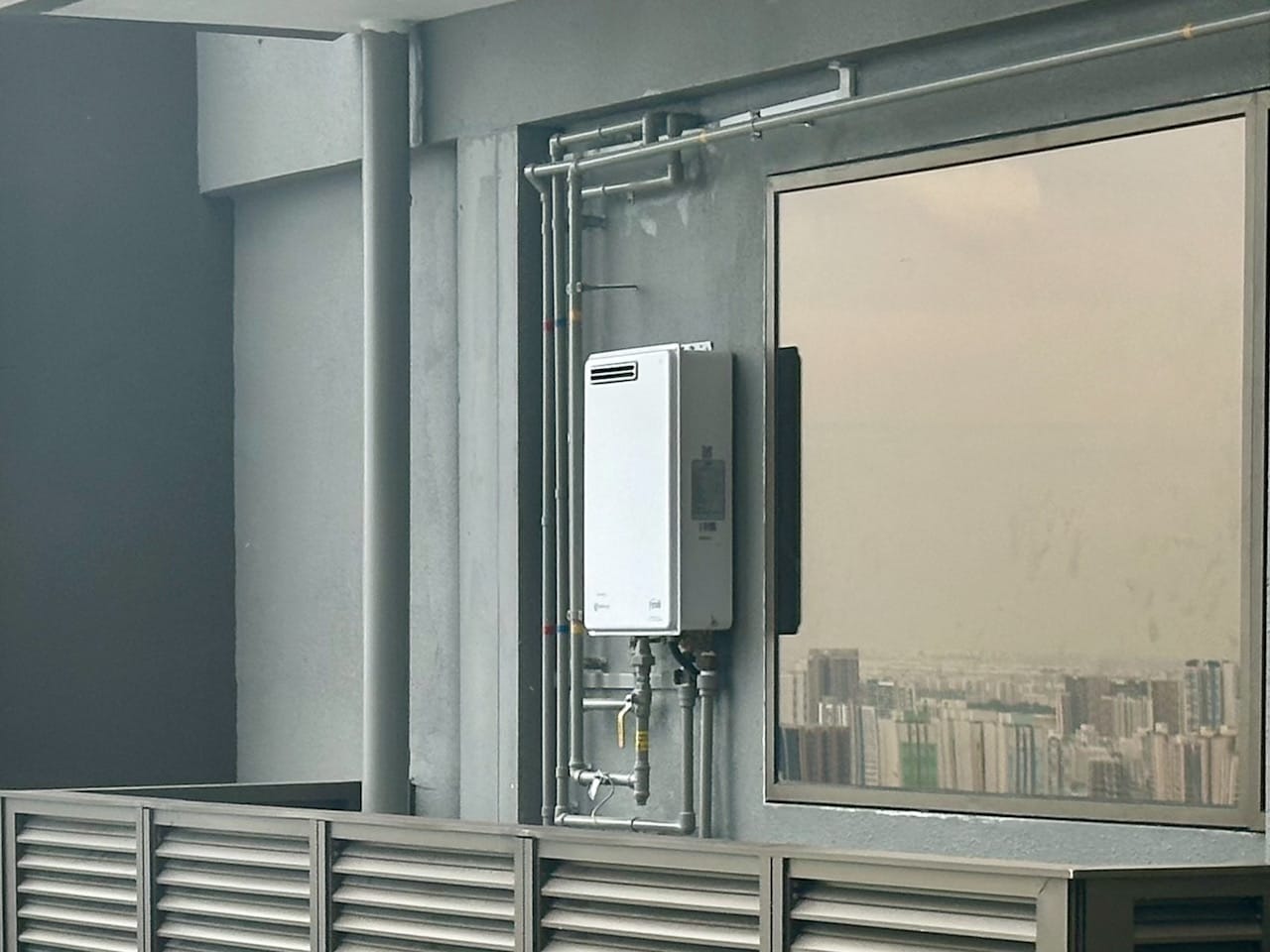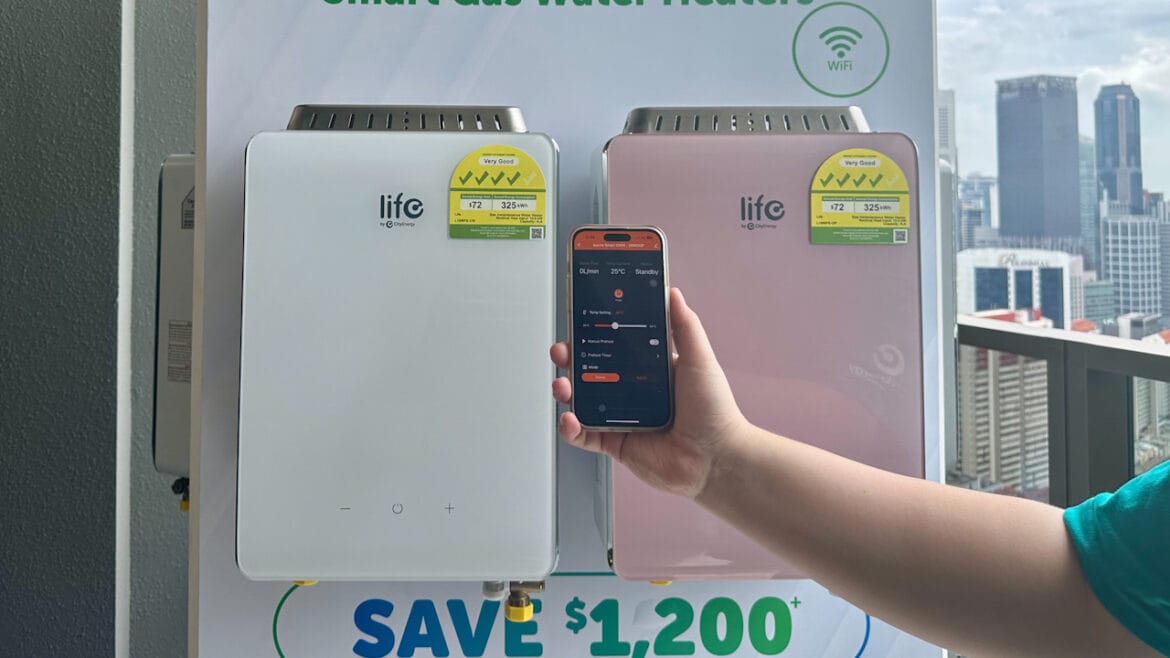If you’re shopping for a water heater this year, it’s worth looking beyond the price tag. That’s because Singapore’s new energy-labelling rules are changing how water heaters are rated and what counts as a good deal. In the coming months, some retailers may mark down older, non-certified models to clear shelves. They’ll look like bargains, but they could lock you into years of higher bills and unnecessary carbon emissions.
Chances are, these might be water heaters that have not been registered under the new Mandatory Energy Labelling Scheme (MELS), a tick-rating system that shows how efficiently an appliance uses energy. The National Environment Agency (NEA) extended MELS to water heaters on 1 April 2025, requiring all models to be tested and registered. Once the one-year grace period ends on 31 March 2026, only labelled units can be sold.
Of course, that doesn’t automatically mean an unlabelled heater is inefficient. But without a screening and testing process, there’s no way to know. But does efficiency really matter?
Why efficiency matters
As it turns out, the difference is far from trivial. City Energy, Singapore’s sole town-gas provider, commissioned Associate Professor Lee Siew Eang, Honorary Fellow of the Department of the Built Environment, College of Design and Engineering, National University of Singapore (NUS), to conduct a study comparing the carbon emissions of gas and electric heating systems. It found that switching from a basic electric storage heater to a 4-tick gas instant model can cut household emissions by about 80 per cent — roughly 320 kg of CO₂ a year — and save up to SGD 1,200 over its lifespan.
This may not seem like much, but if every household in Singapore switches from electric storage water heaters to gas instant water heaters, Singapore could offset carbon emissions equal to planting about 1.4 million trees or taking 300,000 cars off the road every year.
While it might seem counterintuitive, using gas to heat water directly is often cleaner overall than using electricity made from gas in the first place, especially in Singapore. Electric heaters waste little energy at the point of use, but our grid electricity is generated by burning gas on a large scale, with efficiency losses of around 40 to 50 per cent. A gas heater uses that same fuel directly, which is why its overall carbon footprint is lower.
That said, it’s safe to say that most households care more about their monthly bills than national targets. The good news here is that both goals now happen to align: what’s better for the environment is naturally better for your wallet, too.
Choosing what fits your home
MELS uses a five-tick scale, and currently, only one heat-pump model sits in the coveted 5-tick category. Heat pumps, however, are costly, bulky, and require a well-ventilated outdoor space — something most HDB and condo units lack.
That brings us to the 4-tick tier, which is dominated by gas and electric instant heaters. Electric storage units barely feature, with only two small-capacity 14- and 15-litre models making the cut — just enough for a single shower before needing to be reheated. In most cases, an electric instant heater is the simplest and most effective option if you only need hot water in one bathroom.
For multi-bathroom homes, however, electric storage heaters remain popular because they provide a steady supply of hot water to multiple bathrooms simultaneously and support features such as bathtubs or rain showers.
The downsides? They are large and often hidden in false ceilings. They also take a long time to heat (20-30 minutes) and usually waste energy keeping unused water hot. Ceiling installations also make repairs complicated and messy when things go wrong.

The Landmark @ Chin Swee joins a growing list of new developments choosing gas instant water heaters for greater efficiency and design flexibility.
It’s easy to see now why City Energy is trying to get the word out on gas instant heaters, as they straddle both worlds: the compact form, convenience, and efficiency of electric instant units, but the ‘power’ to serve multiple outlets like electric storage heaters. Most importantly, they heat only the water you use, don’t waste energy on standby, and can be installed in ventilated utility areas.
Signs of a gradual shift?
City Energy says more than 210,000 homes now use gas water heaters — a 210 per cent jump since 2020. About 70 per cent of new condominium projects with gas connections have already made the switch. It’s early days, but the numbers show growing developer interest in gas systems.
It’s not surprising why: they free up ceiling space, lower emissions, and align neatly with tighter energy standards under MELS, reflecting how efficiency considerations are influencing new builds.
The same reasoning applies when you’re upgrading your own bathroom. When it comes to water heaters, energy efficiency is very much a financial choice as it is an environmental one. So the next time you’re in the market for a water heater, it’s worth reading the fine print: the better deal might be the one that keeps paying itself off every time you shower.
